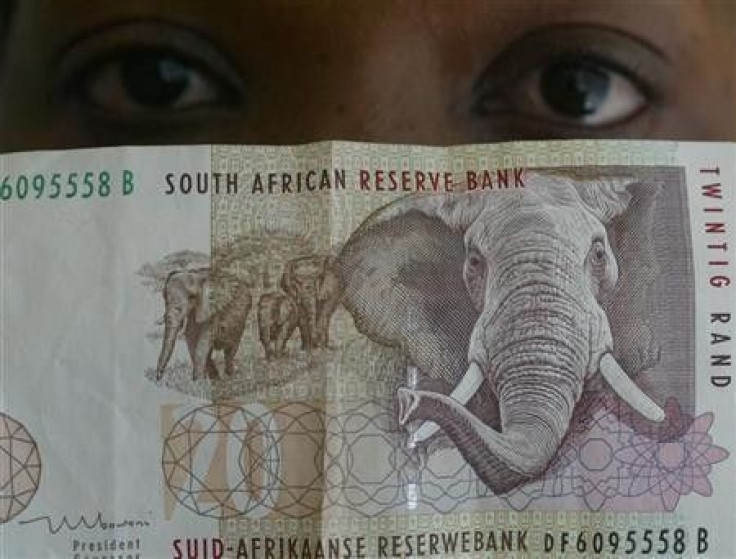S.Africa's rand gains vs dollar, eyes on credit, PMI data

South Africa's rand firmed on Friday and was on course to record its best week in two years, still benefiting from news of a deal towards resolving the euro zone debt crisis.
Government bonds retreated a bit, taking a breather after this week's gains that saw yields -- which move inversely -- fall to multi-week lows.
Focus next week turns to a slew of data, including credit and money supply numbers on Monday, which will give a clue about whether monetary conditions are improving enough to point to a sustained recovery in Africa's largest economy.
The rand was trading at 7.7031 to the dollar at 1525 GMT, 0.4 percent stronger than Thursday's New York close of 7.7340.
The rand has come back from 28-month lows of 8.4950 hit in September but remains vulnerable to developments in the euro zone, a region that is a major trading partner of South Africa.
If everything in Europe is sorted out, then the rand should strengthen. It's dependent on the euro really, said Jim Bryson, chief dealer at Rand Merchant Bank.
The rand has gained 3.8 percent this week, hitting its 50-day moving average for the first time since early September.
The firming trend is not convincing just yet and it will have to close below 7.75 to the dollar and break 7.70 to signal a potential move towards 7.50, Bryson said.
After strong gains this week, government bonds retreated a bit as market players took some profit. The yield on the 2015 bond went up two basis points to 6.56 percent and that on the 2026 yield up 1.5 basis points to 8.245 percent.
On Monday, data is expected to show growth in credit demand slowed to 5.77 percent year-on-year in September. A lower than expected figure could boost bonds as it would support the case for another interest rate cut to boost the recovery.
Purchasing Managers' Index numbers on Tuesday could prove to be another boon for bonds, especially if forward-looking components of the index such as new sales order point to further weakness in the key manufacturing sector.
If it continues to weaken, chances are better than even that the manufacturing sector will be the next supply sector to fall into recession, blighting prospects of an economic recovery, and adding pressure on the Reserve Bank to ease monetary policy, said Colen Garrow, economist at Brait.
© Copyright Thomson Reuters 2024. All rights reserved.











